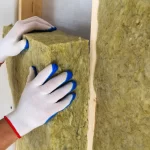How much does cavity wall insulation cost?
Cavity wall insulation usually costs around £600 for a small two-bedroom apartment to £1,800 for a large four-bedroom detached house.
How long does cavity wall insulation last?
Cavity wall insulation is guaranteed for 25 years, but it can last for the life of the property.
Does Cavity wall insulation cause damp?
Polystyrene bead cavity wall insulation allows water to run down into the ground instead of passing through to your walls, so it does not cause damp issues.
Is Cavity wall insulation worth it?
Cavity wall insulation is definitely worth having. It pays for itself within 3 to 5 years by saving you money on your heating bills. It can also add up to 3% to the value of your home.
How to insulate walls without cavity?
For walls without a cavity you should consider internal or external wall insulation, which is an additional layer of wall added to the inside or outside of your property.
How do I know if I have Cavity Wall insulation?
To find out if you already have cavity wall insulation, check your outside brickwork for evidence of small drill holes in the mortar. You can also check your home’s energy performance certificate online, or book a survey to have your walls inspected.
How does cavity wall insulation work?
Cavity wall insulation is injected into the narrow cavity in your walls, which is there to prevent rainwater from seeping into your interior walls. Insulation is made from heat-trapping material to prevent heat loss from your home, while not allowing water to permeate through it.
How to check if cavity wall insulation is wet?
Cavity wall insulation may become wet if the installation has failed. Check your walls for cold spots, discolouration, or signs of dampness or musty smells. You can also arrange a home survey to have your walls properly checked.
How to remove cavity wall insulation?
Removing cavity wall insulation is done using a process called extraction, which is essentially “sucking out” the insulation material through small holes in the wall.
Does cavity wall insulation need renewing?
Properly installed cavity wall insulation, using a modern material like polystyrene beads, should not need to be renewed. If any building works are carried out which could disrupt the walls or the insulation, you may want to get the integrity of the insulation checked.
How much does cavity wall insulation save?
Cavity wall insulation typically saves 11% to 16% off your energy bill each year. This is around £150 to £450 off the average bill, depending on the size of the property. The larger the property and the more exterior walls it has (detached house vs. mid terrace) the more it can save with cavity wall insulation.
Can I get a grant for cavity wall insulation?
Cavity wall insulation is covered by government schemes which can install it for free. If your council tax band is A to D and your home’s EPC rating is D or lower, you may be eligible for the Great British Insulation Scheme (GBIS). If you’re on income support or qualify as vulnerable, you may be eligible for the Energy Company Obligation (ECO4). Book a free no-obligation phone consultation with us to find out if you’re eligible.




